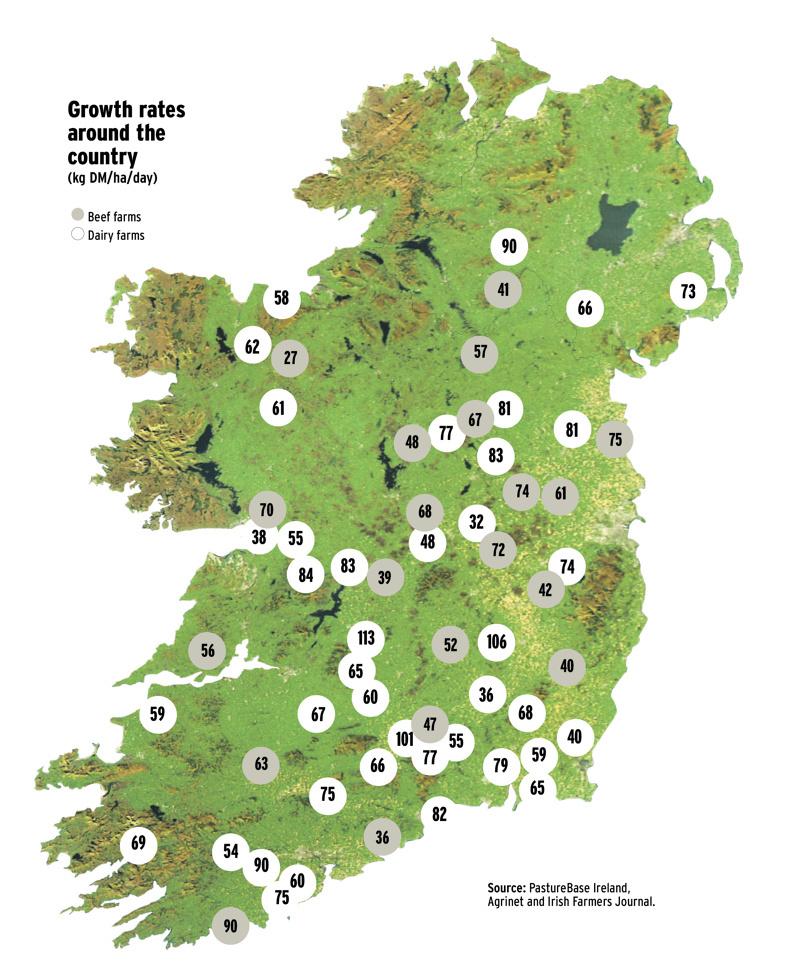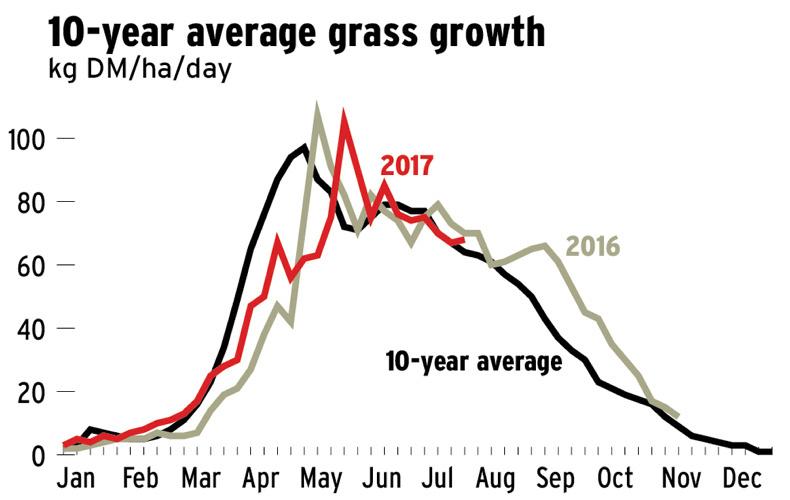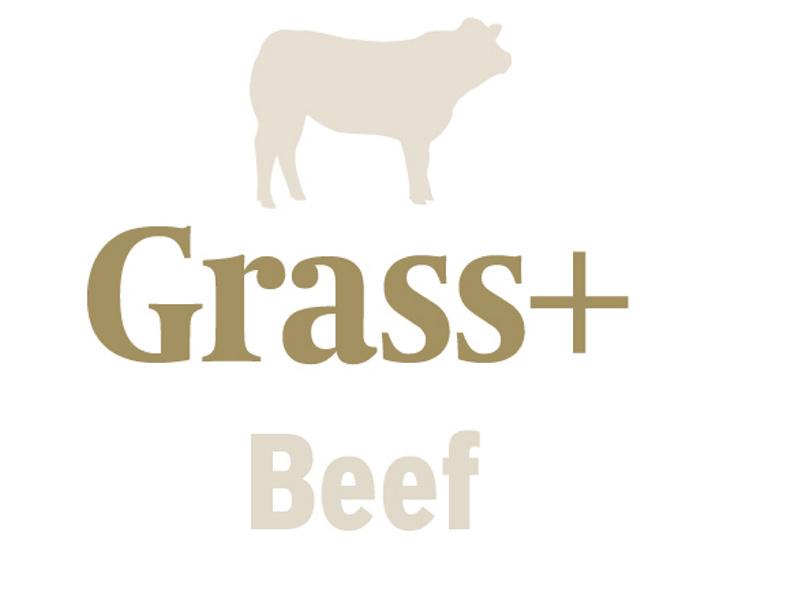Growth around the country is relatively unchanged on last week, with an average of 57kg DM/ha/day recorded across our measuring farms.
However, for many farmers in the western half of the country, and indeed those on heavy ground elsewhere, thoughts have turned from growing grass to minding ground.
Heavy rain last week scuppered grazing plans for many of our farms and those on heavy soils where lots of rain fell are finding it very difficult, with cattle becoming unsettled and beginning to poach the sod.
Second cut
In contrast, those who missed out on the heaviest of the rain and farmers with very free-draining land are reporting business as usual.
They are continuing to graze tight and trying to build covers.
Their only worry is when their window for any remaining second-cut silage is going to come, with the first half of August looking unsettled.
My advice is to control what you can – measure nitrates and sugars before making a cutting decision.
A short wilt is not the end of the world if these are on target and if they aren’t there are additives available which will help with the preservation process.
Heavy ground
The advice for wet summer weather is the same for wet springs, though there are more options. Give cattle smaller field areas, lighter covers of grass and move them more frequently.
The best operators may be moving cattle more than once a day and this is ideal.
Some are housing cattle temporarily during heavy bursts of rain and simply letting them back to grass when it wanes. Farm roadways and standoff pads can be used too.
If housing cows and calves, ideally there should be a facility whereby calves can creep out into fresh air.
Muggy weather at present means that a poorly ventilated shed coupled with new surroundings and a wet coat is the perfect storm for respiratory disease.


Co Kilkenny
System suckler to weanling
Soil type mostly heavy
Average farm cover (kg DM/ha) 476
Grass demand (kg DM/ha/day) 43
Growth (kg DM/ha/day) 55
We took a lot of silage out to have after-grass for the autumn calvers and farm cover is slowly building.
The second cut of silage is ready for cutting as soon as the weather conditions allow. I also have a few paddocks to take out. Grass demand is starting to increase rapidly. To date, I have 58 cows calved and thankfully it is going very well for me and hopefully the majority of them will be finished in the next week or so.
All the yearlings were dosed for worms two weeks ago and they are thriving.
I hope to get a weight on all these next week to calculate their average daily gain since turn-out also.
This will aid me in selecting my replacement heifers for bulling.
I bought 10 reared dairy-bred calves last week as there is a surplus of grass on the farm and also I hope to use some of them for breeding. There is a new three-bay being erected on the farm at present to cater for the increased cow numbers.

Co Clare
System suckler to store
Soil type variable
Average farm cover (kg DM/ha) 761
Grass demand (kg DM/ha/day) 32
Growth (kg DM/ha/day) 56
Grass supply is on track, but getting it eaten is a different ball game now. Ground conditions are really deteriorating at the moment and hopefully things will pick up later in week as my heavier cattle are beginning to do real damage to the sod.
I’m feeding concentrates to last year’s autumn-born bulls at grass as well as heifers and bullocks. If the weather doesn’t improve I’ll have no choice but to house the bulls and maybe the bullocks also.With the unsettled weather, cattle are beginning to walk and even after giving them a fresh break they’re not content.
Spring calves are doing well and have received two oral doses to date. I intend selling some weanlings for cashflow in the back end.
I reseeded a paddock on Saturday morning using the one pass system. It got three bags of 10-10-20 and 2.5t lime/acre.
Both are well washed in at this stage. Autumn calving is well under way with eight calves on the ground. All calves are healthy and seem to be happy outdoors despite the recent bad spell.

Co Kerry
System suckler to weanling
Soil type variable
Avg farm cover (kg DM/ha) 1,143
Grass demand (kg DM/ha/day) 38
Growth (kg DM/ha/day) 76
We got some very heavy rain over the last week. Being on the west coast we generally have worse weather than the rest of the country.
I actually brought stock in for a night when the rain got very bad, but they were back out when it died down.
We’re managing well with these conditions and we are moving the cows two to three times daily to avoid any poaching that may occur. Grass is very plentiful as we are stocked quite low at 2.68/LU so cattle are easily managed.
We eased up spreading nitrogen and have started to spread one bag of 18-6-12/acre after every grazing.
We have a number of paddocks taken out as bales this year but nothing has been taken out in the past week due to poor weather conditions. We have also 12 to 14 acres closed up for second-cut silage and hope to cut when the weather eases up.
The bulls were taken out on 10 July and we intend to scan all cows in the next fortnight, with all empty cows being culled.

Newford Herd, Co Galway
System suckler to steer beef
Soil type dry to heavy
Average farm cover (kg DM/ha) 843
Grass demand (kg DM/ha/day) 54
Growth (kg DM/ha/day) 54
We grew bang on our grass demand last week and currently have 16 days ahead on the home block, where stocking rate is at 3.6 LU/ha on 26ha. Our target pre-grazing cover at the moment is 1,450kg DM/ha – just under 10cm.
There is 15ha of second-cut silage ground closed up on the Raheen Woods out-farm which we had planned to take last Wednesday. Rain brought a halt to proceedings and we are still waiting to get in for it. Just prior to this we had taken just over 4ha from the Tuohy out-farm and another 4ha in surplus bales too.
We scanned the herd this week, with 93/99 in-calf after 10 weeks breeding and 82 to calve in the first six weeks. In terms of heifers, 23/26 are in calf after six weeks’ breeding and 22 held to first service.
The two Friesian teaser bulls are currently on 6kg of concentrates daily, fattening up for slaughter. The vet castrated the 2017 bulls last Thursday and there was no big health issues over the weekend.

Grass Plus dairy: growth rates steady as weather remains mixed






 This is a subscriber-only article
This is a subscriber-only article
















SHARING OPTIONS: